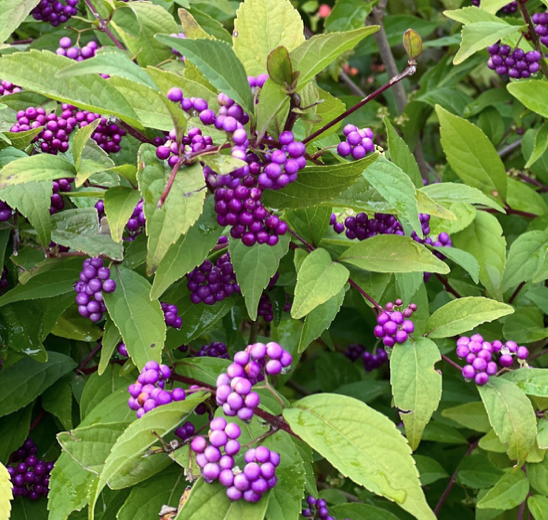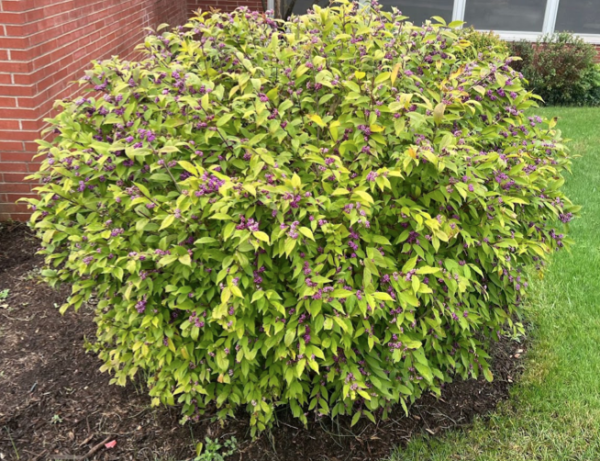I know plants might not seem like the most interesting topic to most people. Being all around us, they tend to just fade into the background, but believe me there’s a lot to learn about them and even more to love. It’s so easy for me to fall down the rabbit hole of researching plants, and just as I expected, I did exactly that with Beautyberry.
Where can I find one?
In case you don’t want to finish reading this article until you have sat down next to a Beautyberry, I’ll let you know the answer to this question now. We happen to have two of these plants growing just outside the front doors of our very own High School (it’s almost like I picked this plant specifically because it’s growing at MHS). They’re hard to miss, now that the temperature is dropping, with their vibrant purple berries amidst the brown leaves and dying plants all around them.
How to identify one?
Though there are a few different variations of Beautyberry that look slightly different from one another, they are all recognizable as the same plant. All variations of Beautyberry have glossy berries that range in color from dark purple to magenta, and these berries make the plant very easy to identify. The berries begin to grow in the late summer, and last throughout fall, making Beautyberry really stand out among the plants around it. The American variation of Beautyberry (or Callicarpa americana, if you want to be scientific) has berries that form tight clusters and wrap around the branch, while the non-native variations of the species, found throughout east and southeast Asia, have berries that cluster more loosely and hang off of the branch. Unfortunately, the variation that we have growing outside of the High School is not native, but it is still a great plant.
Besides having, well, beautiful berries, Beautyberry does have a variety of medicinal uses. Native Americans have used this plant to treat malaria, inflammation of joints and muscles, dizziness, stomachaches, and even dysentery. More so, in traditional Chinese medicine, Beautyberry was used as a way to stop bleeding in the stomach and lungs. This, of course, doesn’t mean that you should turn to Beautyberry every time you have an ache or a pain– modern medicine was invented for a reason. Despite this, it’s still interesting to learn about all the historical uses of this plant (at least to me).
However, something that might be a little more relevant to modern times is the effects of Beautyberry as a bug repellent. Beautyberry leaves will repel ticks, mosquitoes, and other pests which not only work as a way for the plant to protect itself from being eaten by pests, but also means that the plant can be used as a natural insect repellent for humans. It was found that Beautyberry leaves can repel bugs just as effectively as DEET, and of course, are much more environmentally friendly. This doesn’t make Beautyberry the easiest alternative to bug spray, but if the mosquitos are getting to be too much for you and you happen to be near a Beautyberry bush, you can rub the leaves on your skin or clothing to keep them away.
In addition to these other uses of Beautyberry, the berries are actually edible. (Huge disclaimer: Please do not go around eating wild plants. That can be very dangerous, and if that isn’t enough of a reason, no one wants your bite marks on our beautiful plants.) Although the berries are said to taste medicinal and bitter when eaten raw, they are often made into jellies or wines and have a flavor that is similar to hibiscus.
Henri’s Opinion
If you couldn’t guess from the fact that I just wrote a whole article about this plant, I’m a huge fan. I don’t see plants with such bright purple berries very often, and purple is one of my favorite colors, so that makes Beautyberry an automatic favorite. On my completely arbitrary rating scale, I would give it a solid 9/10, just because I wish the berries would last year-round.

